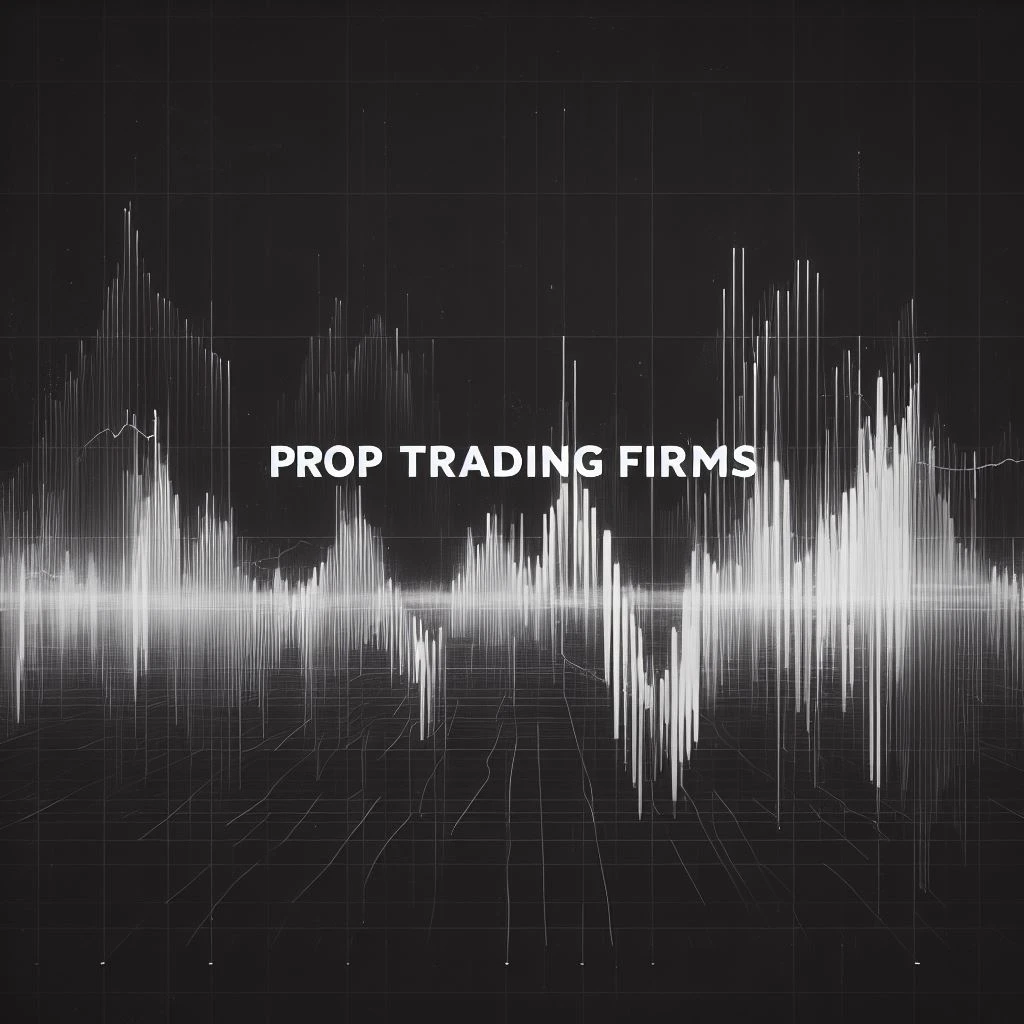Tail Risk and Black Swan Events
If you’ve never heard of “tail risk” or “black swan events”, you’re not alone. These may sound like phrases from a novel, but they are actually crucial concepts in the world of financial trading. Understanding these terms is especially important if you’re a funded trader, as it can make a big difference in your trading success. So, let’s delve into these seemingly complex terms and break them down, shall we?
What Are Tail Risk and Black Swan Events?
Tail Risk
First off, let’s talk about tail risk. Imagine a bell curve that represents the potential outcomes of your investments. Most of the time, you’ll land somewhere in the middle—neither making a killing nor losing your shirt. But what about those rare instances when things go way off-script? That’s what we call “tail risk”—the chance that an investment will move more than three standard deviations from the mean. In simpler terms, it’s the risk of a very bad (or very good, but let’s focus on the bad for now) day in the market.
Example: Remember the dot-com bubble? Yeah, that was a tail risk event that caught a lot of people off guard.
Black Swan Events
Now, onto black swan events. Coined by Nassim Nicholas Taleb, this term refers to unpredictable events that have massive impacts. We’re talking about stuff that’s not just off the bell curve; it’s off the charts! These events are often rationalized with hindsight, as if they were expected.
Example: The COVID-19 pandemic is a classic black swan event. No one saw it coming, and it rocked global markets like nothing else.
Historical Context
To give you a better idea, let’s look at some historical events:
- 2008 Financial Crisis: This was a tail risk that turned into a black swan event. The subprime mortgage bubble burst, and what was considered a low-probability event became a full-blown global crisis.
- COVID-19: This pandemic is the epitome of a black swan event. It was unpredictable and had a monumental impact on virtually every asset class. Funded traders who were not prepared saw significant losses, while those who hedged against such risks fared better.
So, why should funded traders care about all this? Because understanding tail risks and black swan events can help you prepare for the worst. It’s all about managing risks to protect your portfolio from those nasty curveballs life throws at you.
Alright, now that we’ve got the basics down, let’s dig deeper into how you can actually manage these risks and come out on top. Stay tuned!
The Probability and Frequency of Tail Events
Let’s get into the nitty-gritty of how often these tail events actually happen. You might think, “It’s a once-in-a-lifetime thing, right?” Well, not so fast.
Statistical Models and Real-World Occurrences
In the world of statistics, tail events are those rare anomalies that live in the “tails” of a distribution curve. You know, the far ends of the bell curve we talked about earlier. According to statistical models, these events are supposed to be super rare. But, in the real world, they happen more often than these models predict.
Example: The stock market crash of 1987, known as Black Monday, was supposed to be a statistical impossibility. Yet, it happened.
Why Traditional Models Fail
So, why do these traditional models get it wrong? One reason is that they often assume that market returns are normally distributed, which is a fancy way of saying they fit neatly into a bell curve. But markets are messy. They’re influenced by human behavior, global events, and a ton of other factors that can’t be neatly quantified.
Identifying Tail Risk in Your Portfolio
Alright, now that we know these tail risks are not as rare as we’d like to think, how do we spot them in our own portfolios?
Tools and Strategies for Identification
First off, you’ve got to keep an eye on your investments. There are various tools and strategies to help you identify tail risks. One popular method is “stress testing,” where you simulate different economic scenarios to see how your portfolio would perform.
Example: There are software tools that allow you to simulate how a 2008-like financial crisis would impact your current portfolio. Scary, but super useful!
Role of Data Analytics
Data analytics can be your best friend here. By analyzing historical data and market trends, you can identify assets in your portfolio that are more susceptible to tail risks. This doesn’t mean you’ll be able to predict the next black swan event, but it does mean you’ll be better prepared for it.
So,tail risks and black swan events are more common than you’d think, and they can wreak havoc on your portfolio if you’re not prepared. But by understanding what they are and how to identify them, you can take steps to protect yourself. Stay tuned as we delve into how to manage risks in the next section!
How Funded Traders Can Hedge Against Tail Risk
So, you’re a funded trader, and you’ve got some skin in the game. You’re probably wondering, “How can I protect myself from these tail risks you’ve been talking about?” Great question! Let’s dive into some strategies you can use to hedge against these financial curveballs.
Defensive Strategies: Cash Reserves, Defensive Stocks, Short Exposure
First up, let’s talk about the basics. One of the simplest ways to hedge against tail risk is to keep a decent chunk of cash in your portfolio. Cash won’t give you high returns, but it’s stable and can act as a cushion when the market takes a nosedive.
Defensive Stocks: These are stocks that tend to hold their value even when the market is doing poorly. Think utilities, healthcare, and consumer staples like food and toiletries. People need these things no matter how bad the economy gets.
Short Exposure: This is a bit more advanced but super effective. By taking a short position on certain assets, you can profit when their value goes down, effectively balancing out losses elsewhere in your portfolio.
Advanced Strategies: Options, Swaps, and Gold
Let’s talk about some advanced strategies.
Options: Buying put options can protect you from downward price movements. Think of it like insurance for your stocks.
Swaps: These are financial contracts where you can exchange one type of financial instrument for another. For example, you could swap fixed-rate loan payments for variable ones, or vice versa.
Gold: The good ol’ shiny metal has been a go-to hedge for centuries. When markets go haywire, gold often retains or even increases its value.
Hedging Against Black Swan Events
Hedging isn’t free, and you need to weigh the costs against the benefits.
Short-Term vs Long-Term Costs
Short-Term: Buying options or holding a lot of cash might seem expensive in the short term. You’re either paying for the option or missing out on potential gains from other investments.
Long-Term: But think about the long-term benefits. If a tail risk event does happen, the cost of not hedging could be way higher. You could lose a significant portion of your portfolio.
Trade-offs and Considerations
Every hedging strategy has its trade-offs. For example, keeping too much cash might protect you from market volatility but also means you’re not investing that money elsewhere for growth. Similarly, while options provide excellent protection, they come at a price, literally.
So, there you have it. Hedging against tail risk is like buying insurance: it might seem like a drag, but you’ll be glad you have it when you need it. Stay tuned for more insights on how to navigate the tricky waters of financial trading!
The Role of Black Swans in Market Volatility
You’ve probably heard the term “Black Swan” tossed around, especially when people are talking about big, unexpected market events. But what exactly is a Black Swan, and why should you, as a funded trader, care? Let’s break it down.
How Black Swan Events Disrupt Markets
Black Swan events are those rare, unpredictable occurrences that nobody sees coming but have massive impacts. They’re like the curveballs of the financial world. When they hit, they can send markets into a tailspin, causing extreme volatility.
Case Studies: Impact on Traders
Remember the 2008 financial crisis? That was a Black Swan. Traders who were heavily invested in mortgage-backed securities got hit hard. On the flip side, those who had diversified portfolios or had hedging strategies in place fared much better.
Preparing for the Unpredictable: Actionable Steps
So, how can you prepare for something that’s, well, unpredictable? While you can’t foresee a Black Swan event, you can take steps to minimize its impact.
Crisis Planning and Risk Assessment
First off, have a crisis plan. Know what you’ll do if markets start to plummet. This could be as simple as setting stop-loss orders on your trades or as complex as having a full-blown risk assessment strategy.
Diversification Techniques
You’ve heard it before: Don’t put all your eggs in one basket. Diversifying your portfolio across different asset classes can help you weather the storm when a Black Swan event occurs.
The Importance of Active Management
Being a trader isn’t a set-it-and-forget-it kind of deal, especially when you’re dealing with the potential for Black Swan events.
When to Lock in Profits
One of the keys to active management is knowing when to lock in your profits. If you’ve made a good gain on a trade and you see signs of market instability, it might be a good time to cash in.
How to Adapt Your Strategy
Markets are always changing, and your trading strategy should too. If a Black Swan event does happen, you’ll need to be ready to adapt. This could mean anything from adjusting your asset allocation to changing your trading tactics altogether.
While you can’t predict Black Swan events, you can prepare for them. And as a trader, being prepared can make all the difference.
Conclusion
Alright, let’s wrap this up. We’ve covered a lot of ground, from what tail risks and Black Swan events are, to how they can impact funded traders, and what you can do to prepare for them.
Summary of Key Points
- Tail risks and Black Swan events are rare but can have a massive impact on markets and your portfolio.
- While you can’t predict these events, you can prepare for them through diversification, crisis planning, and active management.
- New tools and technologies, like AI and machine learning, are helping traders get better at predicting and preparing for tail risks.
Final Thoughts for Traders
As a trader, your job is to manage risk effectively while seeking out profitable opportunities. And while you can’t foresee every curveball the market might throw your way, you can certainly prepare for them. So keep learning, keep evolving, and most importantly, keep trading.









